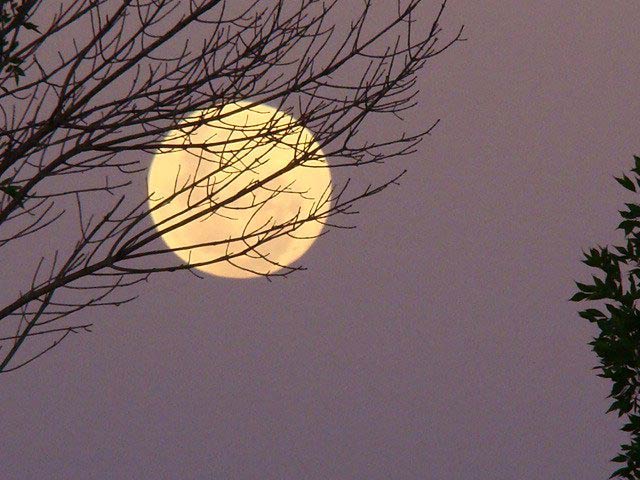 If you have observed the night sky, you would have noticed the Moon does not rise at the same spot every night nor does it rise at the same time. Ever wondered why this happens? There is a scientific explanation for this. To understand this phenomenon better, the revolution cycle of the Moon should first be explained.
If you have observed the night sky, you would have noticed the Moon does not rise at the same spot every night nor does it rise at the same time. Ever wondered why this happens? There is a scientific explanation for this. To understand this phenomenon better, the revolution cycle of the Moon should first be explained.
The Moon's Revolution Cycle
The rising of the Moon is directly linked to its revolution cycle. The Moon takes approximately 27.3 days to complete one revolution around the Earth. The Moon revolves around the Earth in the same direction as the Earth rotates on its own axis; which is east to west. This means when the Earth completes a rotation on its own axis the Moon is ahead by 1/27.3 of a full revolution around the Earth. The Moon rises in the horizon once the Earth completes its 24 hour rotation on its own axis and turns for another 1/27.3 days.
The significance of 1/27.3 days
1/27.3 days translates into roughly 50 minutes. With each passing day the Moon will rise approximately 50 minutes later than it did the previous night and set 50 minutes later too. The Moon follows this pattern for a month after which the cycle begins again. This is because the Moon takes around one month to orbit the Earth.
Change in the rising point of the Moon
The Moon does not rise at the same point every night. The Moon rises at different positions on the horizon because its trajectory around the Earth tips towards the Earth's equator at 5 degrees angle. While the Moon orbits around the Earth its position with the Sun is constantly changing. As it moves around the Earth it rises in the east, moving either north or south depending on the time of the year.
